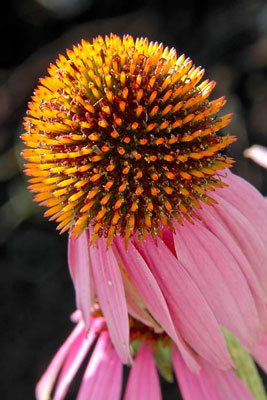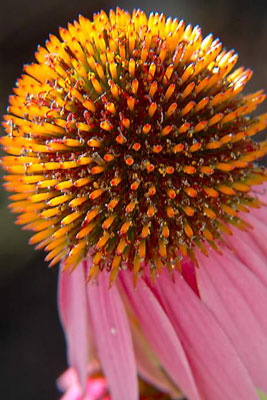The Nikon D3300 offers you many ways to get dynamic close-ups, even without special lenses. If you choose to invest in a macro lens or a set of diopters, you can get even better results. For great close-up shots, try these techniques:
Check your lens manual to find out its minimum close-focusing distance. How “up close and personal” you can get to your subject depends on your lens.
Take control over depth of field by setting the camera mode to A (aperture-priority autoexposure) mode. Whether you want a shallow, medium, or extreme depth of field depends on the point of your photo. In classic nature photography, for example, the artistic tradition is a very shallow depth of field, as shown in the following figure, and requires an open aperture (low f-stop value).

If you want the viewer to be able to clearly see all details throughout the frame — for example, you’re shooting a product shot for a sales catalog — you need to go in the other direction, stopping down the aperture as far as possible.
Remember that depth of field decreases when you zoom in or move closer to your subject. If you need depth of field beyond what you can achieve with the aperture setting, you may need to back away, zoom out, or both. (You can always crop your image to show just the parts of the subject that you want to feature.)
When shooting flowers and other nature scenes outdoors, pay attention to shutter speed, too. Even a slight breeze may cause your subject to move, causing blurring at slow shutter speeds.
Use flash for better outdoor lighting. Just as with portraits, a tiny bit of flash typically improves close-ups when the sun is the primary light source. Again, though, keep in mind that the maximum shutter speed possible when you use the built-in flash is 1/200 second. So in very bright light, you may need to use a high f-stop setting to avoid overexposing the picture.
You can also adjust the flash output via the Flash Compensation control.
When shooting indoors, try not to use flash as the primary light source. Because you’re shooting at close range, the light from your flash may be too harsh even at a low Flash Compensation setting. If flash is inevitable, turn on as many room lights as possible to reduce the flash power that’s needed.
(If you have multiple light sources, though, you may need to tweak the White Balance setting.)
To get really close to your subject, invest in a macro lens or a set of diopters. A true macro lens, which enables you to set focus really, really close to your subjects, is an expensive proposition; prices range from a few hundred to a couple thousand dollars. If you enjoy capturing the tiny details in life, though, it’s worth the investment.
For a less expensive way to go, you can spend about $40 for a set of diopters, which are like reading glasses that you screw onto your lens. Diopters come in several strengths — +1, +2, +4, and so on — with a higher number indicating a greater magnifying power.
The photographer used a +2 diopter to capture the extreme close-up in this figure. The downside of using a diopter, sadly, is that it typically produces images that are very soft around the edges, a problem that doesn’t occur with a good macro lens.


